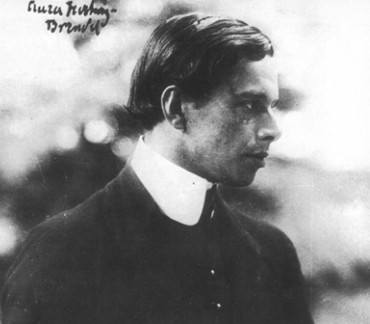sold
5 e. Briefe mit U.
Autograph ist nicht mehr verfügbar
Ernst Ludwig Kirchner (1880–1938), painter. ALS. Frauenkirch, 9 March 1920. 5 pp. Large 4°. With quarter-page original drawing. – In German. Long, important letter to Maria Schmidt(-Hell) in Magdeburg, wife of the art historian Paul Ferdinand Schmidt, then assistant director at the Kaiser-Friedrich-Museum and later director of the Municipal Collections at Dresden. – Written after the separation between Maria Schmidt and her husband, after Kirchner’s nervous collapse in 1915 and his emigration to Switzerland: “As I have been living in great seclusion for many years due to my ailment, I had in fact not heard of your fate, and yet I knew even then that you were the driving spiritual force in the ‘Haus zum Wolf’. I endured hard years, after which my body finally broke down, so that I am today reduced to a wreck without hope of recovery. The only thing that keeps me going is my work. I admit I have progressed in this respect through my very suffering, almost reaching the point at which I am unable to communicate with the outside world. But I would like to answer your question and tell you what could be the path, according to my belief, that you should choose in weaving. ‘Modern art’ is lacking in a proper surrounding for interior decoration, especially in carpets. You know that to this day one has no choice but to use the oriental carpets in modern European rooms. You know that these are now so rare and so expensive that soon there will be no more. Also, they are outdated when it comes to the modern paintings. I assume you also know how these carpets developed: the oriental women transformed in their minds the artistic forms before them, dreamed of them, transmuted them and almost subconsciously let them flow through their hands, back into the ornament of their patient day-by-day carpet work. They thus produced a new work of art, entirely pure, entirely sensual, and yet feminine, by merging with the art of their times. Today, there is great need of something similar, and there probably is no greater task than this: to make today’s art come alive. I therefore do not envisage you mechanically copying a picture or outline, but rather suggest that you, guided by the technique of weaving, weave into the carpets the colors and especially the designs which you see before your mental eye, inspired by pictures that you like. You would thus have the freedom of creation based on all your feelings. The starting point of your work would be a certain series of colors, for instance blue red pink black or green yellow orange brown or whatever [...] [Kirchner inserts a pen-and-ink sketch of a carpet, c. 90 x 210 mm] [...] I do not know whether I have expressed myself clearly or whether this type of work is even agreeable to you. Of course, there are a thousand possibilities. As I have led such a secluded life for so many years, I unfortunately do not know of any painter whom I could name with any certainty who is truly interested in such things. As far as I can see, most of them have become horribly uneducated and shiftless through success which now comes so easily [...]”.
E. Brief mit U.
Autograph ist nicht mehr verfügbar
Ernst Ludwig Kirchner (1880-1938), Maler. E. Brief m. U., Dresden, 20. Dezember 1909, zwei Seiten gr.-8°. Doppelblatt. Blaues Papier. Aus der frühen Dresdener Zeit, vier Jahre nach der Gründung der „Brücke“, an einen „Herrn Doktor“, der um Fotografien für einen Artikel gebeten hatte: „[…] beiliegend sende Ihnen zwei Photos meiner beiden Arbeiten, die Sie seinerzeit in Ihrer freundlichen Kritik erwähnten. Wenn sie für Sie von Interesse sind, darf ich Sie wohl bitten die Blätter zu behalten. […]“. Selten.
Eigenh. Brief mit U.
Autograph ist nicht mehr verfügbar
Eigenh. Brief mit U. ("EL Kirchner").
Autograph ist nicht mehr verfügbar
